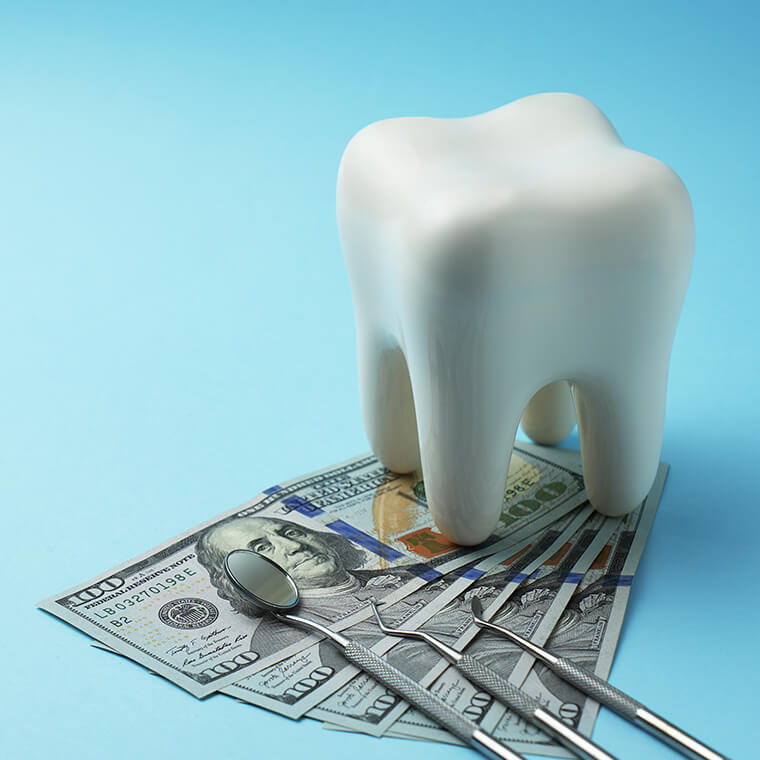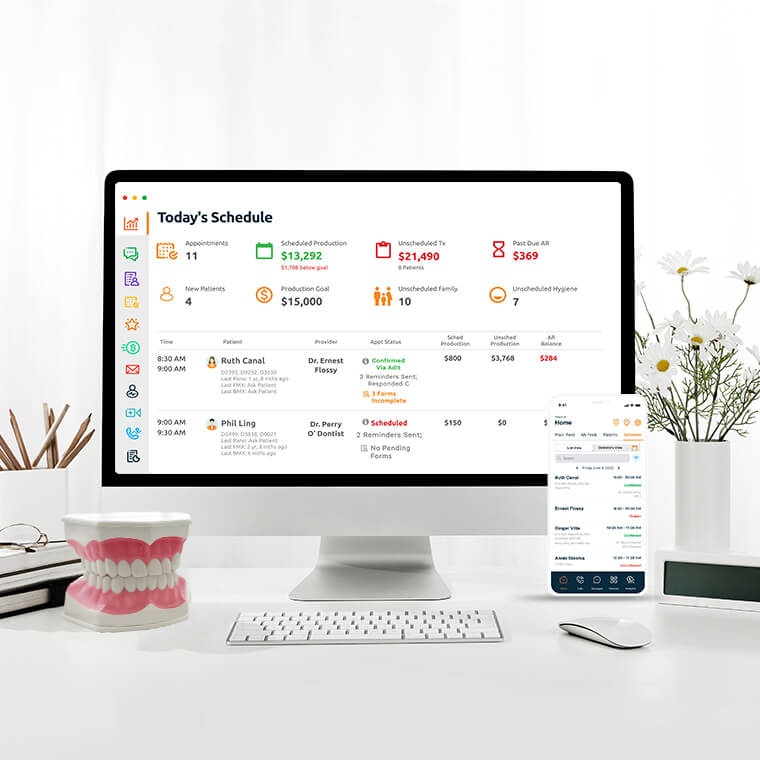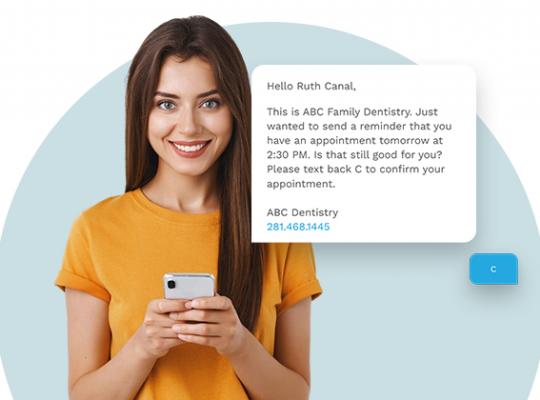Ends in
ends in 125 Days

ends in 125 Days

ends 11 July
From Reactive to Proactive: Preventive Strategies for Dental Practice Growth

As dentistry continues to develop new technological advancements, many practitioners find themselves stuck in a reactive approach to their operations, addressing issues only as they arise rather than anticipating and preventing them. This focus on immediate concerns, such as patient care and administrative tasks, leaves little room for strategic planning to avoid challenges in the first place.
This method can also lead to missed opportunities for growth and improvement. By shifting to a proactive approach, dental practices can better navigate challenges and seize growth opportunities, setting themselves up for long-term success.
How Reactive Is Your Dental Practice?

To understand the distinction between reactive and proactive strategies, it's essential to recognize the characteristics of each. If your office tends to address problems when they become unavoidable, for example, waiting until patient appointments decrease significantly before investing in marketing or waiting until equipment breaks down before considering upgrades–you are reactive.
This pattern can lead to many issues, such as patient dissatisfaction due to long waiting times for appointments, higher operational costs due to emergency repairs, and missed opportunities for attracting new patients. On the other hand, a proactive practice anticipates potential problems and implements solutions before they escalate. For instance, proactive strategies include regularly scheduled maintenance for equipment, ongoing marketing efforts to attract new patients, and continuous staff training to ensure high standards of care.
By being proactive, dental managers can plan ahead for potential challenges and growth opportunities, ultimately leading to a more efficient and profitable practice.
Benefits of Proactive Growth Strategies
Transitioning from reactive to proactive strategies in dental practice management offers numerous advantages. Here's a breakdown of the key benefits:
Improved Patient Satisfaction
Proactive approaches lead to better patient experiences. By anticipating needs and addressing them before they become issues, patients are more likely to feel valued and cared for. For instance, proactive appointment scheduling and reminders reduce wait times and ensure timely care, enhancing overall satisfaction.
Increased Operational Efficiency
Proactive practices are more efficient in managing resources. Regular equipment maintenance and technology upgrades prevent downtime and emergency repairs, reducing disruptions to patient care. This not only saves money but also ensures a smooth workflow, optimizing practice operations.
Stay Ahead of Industry Trends
Proactive practices are better equipped to adapt to changing industry trends. By continuously updating skills and knowledge, dental professionals can offer the latest treatments and technologies, attracting new patients and retaining existing ones. This positions the practice as a leader in the field and ensures long-term viability.
Enhanced Financial Management

Proactive financial management maximizes practice growth potential. Regular reviews, budgeting, and forecasting ensure financial stability and sustainability. For example, analyzing financial reports helps identify areas for improvement and informs strategic investments in technology or marketing campaigns.
Better Staff Engagement and Retention
Proactive practices foster a culture of continuous improvement, leading to higher staff engagement and retention. Regular training and development opportunities show employees that their growth is valued, increasing job satisfaction and loyalty. This, in turn, translates to better patient care, employee retention, and overall practice success.
Stronger Patient Relationships
Proactive practices prioritize patient relationships, leading to stronger connections and loyalty. By actively listening to patient feedback and addressing concerns promptly, practices build trust and confidence. Modern dental software features enable practices to track patient preferences and history, allowing for personalized care and tailored treatment plans.
When Weave dropped their calls, Adit answered Manual processes. Unreliable systems. Sound familiar? This practice was juggling too many tech issues behind the scenes. Then they found Adit. Read how they traded system crashes and paperwork chaos...
Schedule a DemoCommunity Recognition and Trust
Proactive practices engage with their communities, building trust and recognition. By participating in local events, offering free dental check-ups, and educating the public about oral health, practices establish themselves as trusted community members. This proactive approach to relationship building strengthens patient loyalty and attracts new patients through word-of-mouth referrals.
Being proactive about your dental practice improves patient satisfaction, increases operational efficiency, and helps your office adapt to industry trends quickly. By investing in proactive approaches, practices can achieve long-term success and sustainability in a competitive healthcare landscape.
Key Proactive Strategies Your Dental Practice Needs Today

Transitioning from a reactive to a proactive approach requires the implementation of several key strategies. These strategies not only help in preventing issues but also in fostering a culture of continuous improvement and growth within the practice.
Comprehensive Patient Education Programs
Educating patients is a crucial proactive growth strategy. Comprehensive patient education programs ensure that patients understand the importance of regular dental care and how to maintain oral health between visits.
For example, providing informative brochures, conducting workshops, and using your dental website to share educational content can empower patients to take better care of their teeth. This not only improves patient outcomes but also builds trust and loyalty.
Routine Preventive Care Services
Ensuring that patients receive routine preventive care is essential for a proactive dental practice. Regular check-ups, cleanings, and screenings help identify potential issues early and prevent more severe problems from developing. For instance, setting up automated reminders for routine appointments can help maintain a steady flow of patients and reduce the likelihood of missed visits, ultimately contributing to better patient health and practice revenue.
Implementing Advanced Technology
Advanced technology plays a vital role in supporting a dental clinic's growth strategy. Tools such as digital X-rays, intraoral cameras, and CAD/CAM systems enhance diagnostic accuracy and treatment outcomes. A great example is how digital X-rays not only provide nearly instant results but can be automatically updated to the patient's EHR and treatment plan. By investing in such technologies, practices can improve patient care and attract tech-savvy patients.
Regular Training and Development for Staff

Creating an environment that values continuous improvement ensures that the dental team stays ahead of industry developments. Regular training and development programs help staff to enhance their skills and knowledge, ensuring they can provide the best possible care. For instance, workshops on the latest dental techniques and technologies can keep the team updated and avoid gaps in service availability.
Proactive Financial Management
Maximizing growth potential requires proactive financial management. This involves regular financial reviews, budgeting, and forecasting to ensure the practice remains financially healthy. Analyzing financial reports through practice analytics tools can identify trends and areas for improvement and help in making informed decisions about investments in technology or marketing campaigns. Proactive financial management ensures the practice can sustain growth and adapt to changing economic conditions.
Patient Relationship Management
Managing patient expectations and taking actionable steps to meet their needs is crucial for growth. Effective patient relationship management involves using modern dental software features to keep track of patient feedback and reviews.
For example, automated surveys and reputational management tools like Pozative Reviews can help gather patient insights, allowing the practice to address concerns promptly and improve service quality. Building strong patient relationships leads to higher retention rates and positive word-of-mouth referrals.
Community Engagement and Outreach
Engaging with the community is a proactive growth strategy that can yield long-term benefits. By participating in community events, offering free dental check-ups, and educating the public about oral health, practices can enhance their reputation and attract new patients. For instance, sponsoring local events or running school programs on dental hygiene can establish the practice as a trusted and caring community member.
Overcoming Challenges in Implementing Proactive Growth Strategies

Implementing new proactive growth strategies can present a few challenges that can test the resilience and adaptability of your dental practice:
Resistance to Change
One common obstacle is the pervasive resistance to change, which will come from both staff and patients alike. Convincing your team that is entrenched in familiar routines to shift to a more proactive process requires patience, clear communication, and a concerted effort to demonstrate the tangible benefits of proactive approaches. Plus, patients will have become accustomed to your reactive habits of the past may be reluctance towards new initiatives.
Financial Constraints
Financial constraints pose another significant challenge when adopting proactive growth strategies. The initial costs associated with investing in advanced technology and staff training programs can be daunting for dental practices, especially those operating within tight budgets.
But, even if optimizing operational costs might require substantial upfront investment, potential long-term benefits, such as increased efficiency and patient satisfaction, make the shift worthwhile.
Dynamic Healthcare Landscape
It's also important to recognize that the dynamic nature of the dental industry frequently introduces additional complexities. Regulatory changes, evolving patient expectations, and market fluctuations necessitate agility and adaptability in dental practices. Successfully navigating these challenges requires proactive monitoring, continuous evaluation, and timely adjustments to strategies and processes.
Future Trends in Proactive Dental Practice Management

As the dental industry continues to evolve, several trends are shaping proactive practice management, offering new opportunities for improved patient care and practice efficiency.
Integration of Artificial Intelligence (AI) and Machine Learning
One of the most significant trends in proactive dental practice management is the integration of AI and machine learning technologies. These innovations revolutionize various aspects of dental care, from patient diagnosis to treatment planning.
AI-driven analytics: Advanced algorithms analyze vast amounts of patient data to provide valuable insights into behavior patterns and treatment outcomes. For example, AI can predict which patients are at higher risk of developing certain oral health issues based on their historical data, allowing dentists to implement preventive measures proactively.
Automated treatment planning: AI algorithms assist dentists in creating personalized treatment plans for individual patients. By analyzing patient data, including medical history, genetic factors, and imaging results, AI can recommend the most effective treatment options tailored to each patient's needs and preferences.
Enhanced diagnostics: AI-powered imaging technologies improve diagnostic accuracy and efficiency. These algorithms can analyze dental X-rays and detect abnormalities or potential issues that might be overlooked by human observers. This early detection enables dentists to intervene promptly and prevent the progression of oral health problems.
Expansion of Tele-dentistry Services

Teledentistry is still gaining momentum as a proactive approach to delivering dental care, particularly in remote or underserved areas. This trend has expanded patient access to remote dental services, overcoming barriers such as geographical distance and mobility issues. Let's look at specific features of telemedicine in the dental space:
Remote consultations: Patients can consult with dental professionals via video conferencing platforms, eliminating the need for in-person visits for non-urgent issues. This not only improves access to care for patients but also allows practices to expand their reach and serve a broader population.
Virtual follow-ups: Teledentistry enables dentists to conduct virtual follow-up appointments to monitor patient's progress and adjust treatment plans as needed. Patients appreciate the convenience of virtual visits, leading to higher engagement and treatment compliance.
Emergency triage: Teledentistry platforms facilitate remote triage for dental emergencies, allowing patients to receive timely advice and guidance from dental professionals. This proactive approach reduces unnecessary visits to emergency rooms and ensures that patients receive appropriate care promptly.
Advancements in Personalized Medicine
Advancements in genetic testing and precision imaging are driving the trend toward personalized medicine in dentistry. These technologies enable dentists to tailor treatment plans to individual patient needs, improving treatment outcomes and patient satisfaction.
Genetic testing: Genetic testing allows dentists to identify genetic predispositions to certain oral health conditions, such as periodontal disease or tooth decay. Armed with this information, dentists can develop personalized preventive strategies to mitigate the risk of developing these conditions.
Precision imaging: High-resolution imaging technologies, such as cone beam computed tomography (CBCT), provide detailed anatomical information that guides treatment planning with unparalleled precision. Dentists can visualize the patient's oral structures in 3D, allowing for precise placement of dental implants or accurate diagnosis of complex dental problems.
Customized treatment plans: By integrating genetic and imaging data, dentists can create customized treatment plans that address the unique needs and characteristics of each patient. This personalized approach ensures that patients receive the most effective and tailored care, leading to better treatment outcomes and higher patient satisfaction.
By embracing these future trends, dental practices can position themselves as leaders in proactive management, delivering exceptional care to their patients while staying ahead of the curve in an ever-evolving industry landscape.
Transform Your Dental Practice with Adit Dental Software

Elevate your dental practice to new heights of success with Adit Dental Software – your ultimate solution for proactive growth and streamlined operations.
Why Choose Adit?
Unlock the full potential of your practice with Adit's cutting-edge features:
- Online Scheduling: Say goodbye to booking hassles and hello to seamless patient visits with Adit's synced online scheduling integration.
- Personalized Patient Communication Tools: Enhance patient engagement and satisfaction with tailored communication that speaks directly to their needs, all centralized in a single platform.
- AI-driven Analytics: Harness the power of data-driven decision-making with comprehensive practice analytics that provides valuable insights into practice performance and patient trends.
- Billing and Collection: Take control of your practice's finances with Adit Pay's robust tools that optimize revenue streams and minimize expenses.
- Pozative Reviews: Build strong patient relationships and loyalty by promptly addressing feedback and implementing targeted marketing campaigns.
- Telemed: Expand your practice's reach and accessibility with teledentistry capabilities, offering remote consultations and enhancing patient access to care.
Experience the Adit Advantage
Integrate Adit Dental Software into your practice today and experience the difference firsthand. Our user-friendly interface and intuitive features make it easy to streamline operations, improve patient satisfaction, and achieve proactive growth. Schedule your free demo today to see how we can transform your dental practice into a proactive, forward-thinking enterprise.
more about Adit?
Access a full suite of patient communication tools with Adit! Texting, payments, reviews, & scheduling in one place.
Schedule a DemoJosh has made a career working with large DSO organizations and leveraging his extensive sales experience to build partnerships with influential doctors and organizations within the dental industry. He travels the US as an expert guest speaker in medical seminars teaching doctors how to streamline their practices with the latest technology.
Get a $25 Gift Card when you take a demo
Schedule a Demo
Get a $50 Gift Card
when you take a demo
Looks like you're out of bounds!
Hey there! Your current location falls outside Adit's area of operation. If this is unexpected, try disabling your VPN and refresh your page. For further assistance or to book a live demo, connect with us at 832-225-8865.
January 5 Amazon Demo Promo
Terms and Conditions
Last Updated: January 5, 2026Offer ends January 8, 2026, and is limited to prospective customers who sign an annual agreement before January 31, 2026. Gift card will be emailed to the company owner or established representative within 4 weeks of signing the annual agreement. Offer may not be combined with any other offers and is limited to one (1) gift card per office. Offer is not available to current customers or to prospective customers or individuals that have participated in a Adit demo during the prior six (6) months. Recipient is responsible for all taxes and fees associated with receipt and/or use of the gift card as well as reporting the receipt of the gift card as required under applicable federal and state laws. Adit is not responsible for and will not replace the gift card if it is lost or damaged, is not used within any applicable timeframe, or is misused by the recipient. Adit is not responsible for any injury or damage to persons or property which may be caused, directly or indirectly, in whole or in part, from the recipient’s participation in the promotion or receipt or use of the gift card. Recipient agrees to indemnify, defend and hold harmless Adit from and against any and all claims, expenses, and liabilities (including reasonable attorney’s fees) arising out of or relating to a recipient’s participation in the promotion and/or recipient’s acceptance, use or misuse of the gift card. This offer is sponsored by Adit Communications, Inc. and is in no way sponsored, endorsed or administered by, or associated with Amazon.
Thank You!
We appreciate your interest! Adit AI will be calling you in the next few minutes!
Why Adit?
Cut your software bill by up to 60% when you merge everything your dental office needs to run under one roof.
Centralize Communications
- Phones & TeleMed
- Emails & eFax
- Texting & Reminders
- Call Tracking and more!
Streamline Operations
- Patient Forms
- Online Scheduling
- Payments
- Reviews and more!
Boost Production
- Performance Dashboards
- Morning Huddle
- Claims & Collections
- Patient Profiles
- Follow Up Lists
- Year Over Year Metrics
Acquire More Patients
- Digital Marketing
- Website Design
- SEO
- Google Ads
- Facebook Ads
Ends in

and Get Free Phones for Life
Sign up by filling out the form







